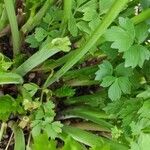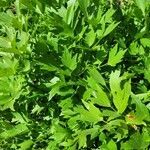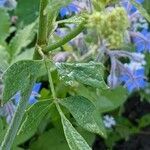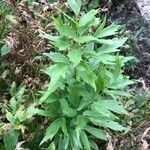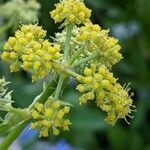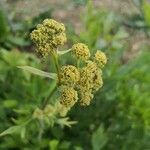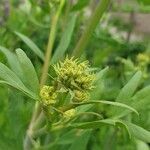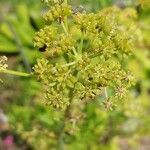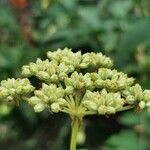A stout perennial herb. It may die back in winter and shoot again in spring. It grows to 1 m high and spreads to 50 cm wide. The leaves are like Italian parsley. The stems are channelled like celery. The flowers are sulphur yellow. They are in delicate umbels. It has a grey-brown, thick, fleshy roots like a carrot. This is 10-15 cm long. The root is used in medicine.
